Living in Spain on a mountain, I have several wild carob trees growing in my yard. By this time of year most of the carob pods have matured and fallen to the ground.
Every year my husband complains about the mess they make, and how he wants to dispose of them.
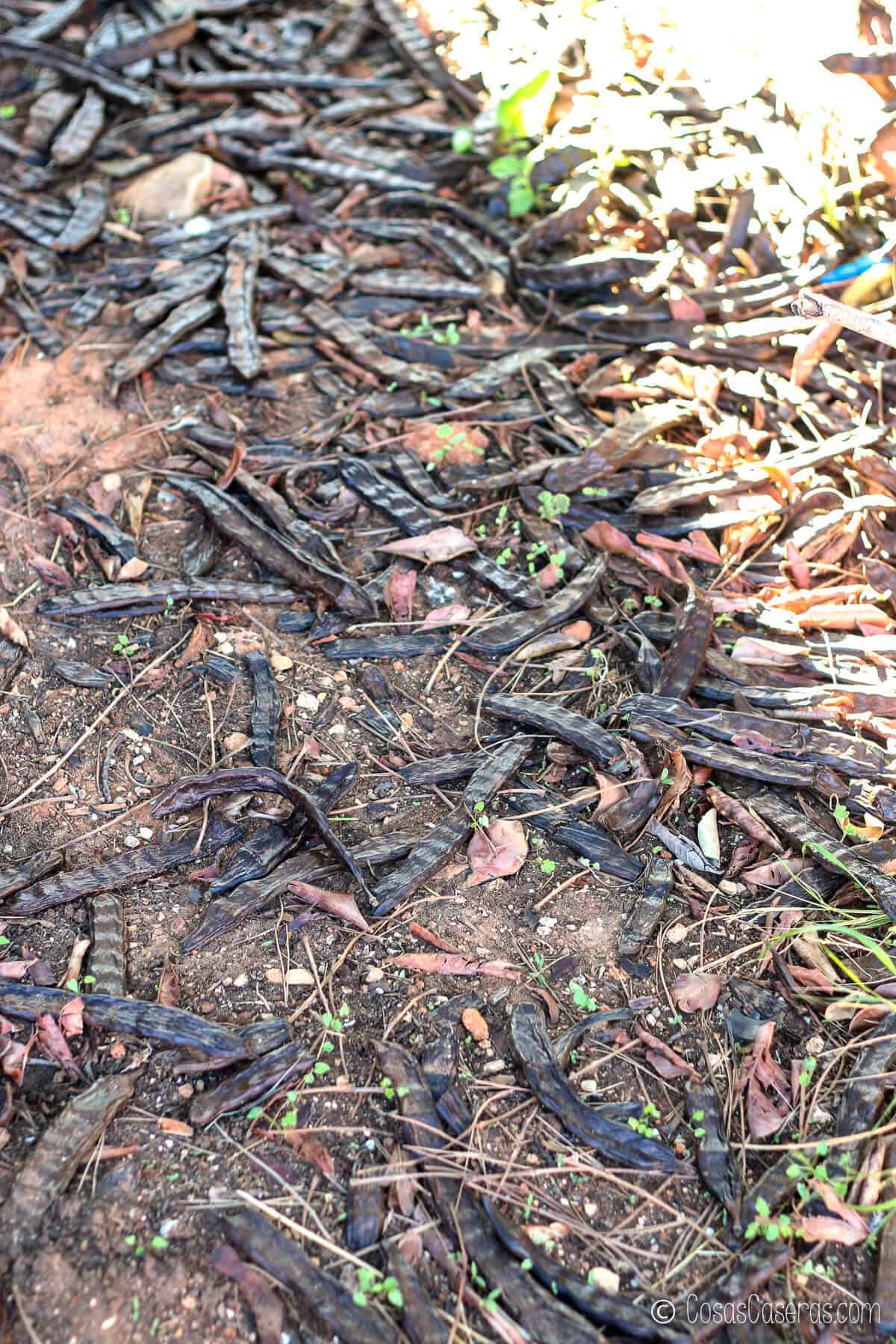
Some are eaten by the dogs, and I looked into grinding them up for the hens, but, sadly, despite the fact that they are a great food for a lot of livestock, everything I have read seems to point to them being a sort of anti-nutrient for chickens. There are places that pay around 15 cents per kilo for the carob pods, but, to be honest, trying to selectively clean them up, package them, and transport them to wherever it is that buys them, after trying to find those places, is really more trouble than what it’s worth.
I have been wanting to try to use the carob pods in some sort of recipe for quite some time. I remember when I was a kid my mom had a stash of carob chips, which were supposed to be the healthy alternative to chocolate.

While carob does have a sweet flavor somewhat reminiscent of chocolate, I’m not sure that I think the resemblance is enough to make it a real alternative to chocolate. Luckily, since then, more studies have confirmed certain health benefits of cocoa. So, while it’s true that milk chocolate isn’t a very healthy choice, one shouldn’t feel guilty about enjoying a square of dark chocolate occasionally.
All of that said, while carob doesn’t taste much like chocolate to me, I actually quite like it. I have been wanting to collect some of the pods to try to fabricate some new recipes using it for awhile, and figured that now was as good of a time as any.
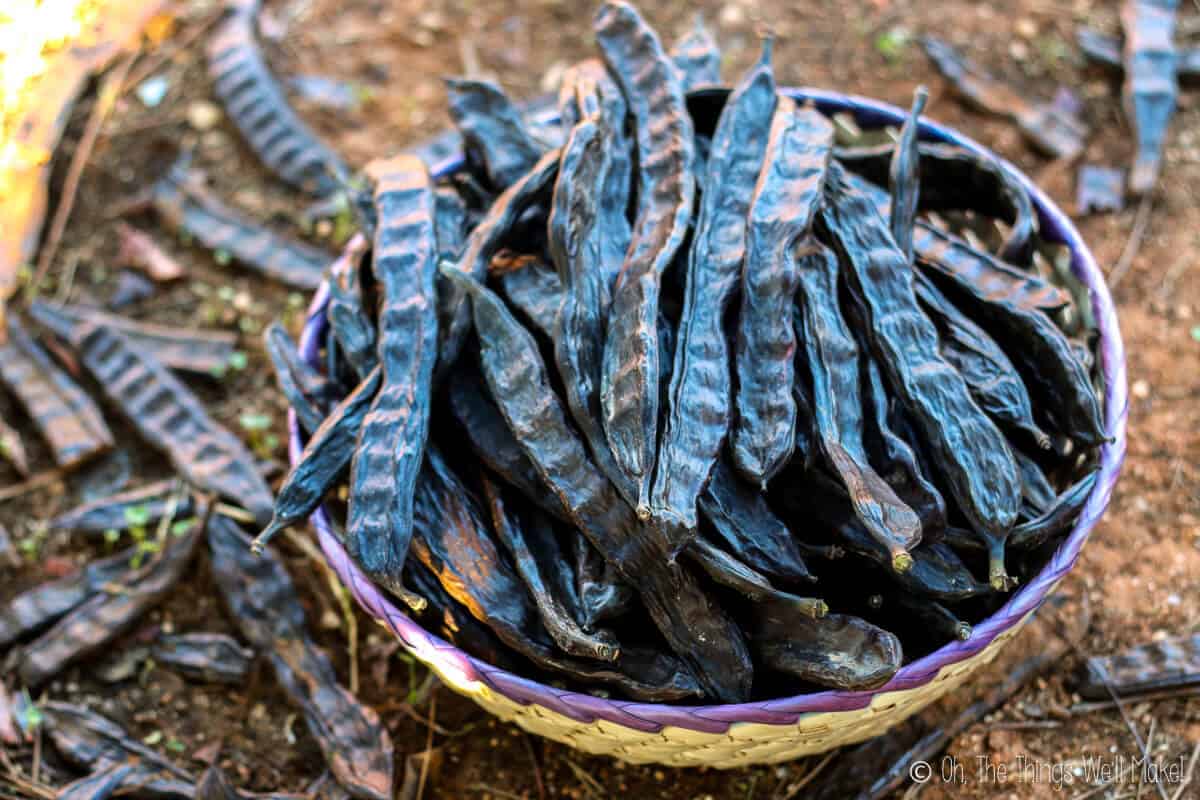
What is carob?
It’s actually a legume. Those of you that are following a paleo diet, though, will be happy to know that it is considered paleo friendly. The reasoning is that you don’t eat the seeds, but rather the pod itself.
The pod is somewhat hard, so for using it in recipes the easiest way is to first convert it into a sort of flour.
Carob has been regaining popularity lately, and one can find pre-made carob flour, but having the carob pods myself, I wanted to use them, of course.
The process isn’t difficult, but it can be somewhat time consuming removing all of the seeds from each pod, especially since the pods themselves are rather hard. In the end, though, I’m happy with my newly made stash of carob flour, and actually found the process fun and rewarding. After all, cutting the pods open gave me a great excuse to sit down and watch a movie.
So, how do you make carob flour?

Ingredients
- carob pod
Instructions
- Rinse the pods in water, and clean them as best you can.
- Soak the pods in water overnight. This step is optional, but it softens the pods somewhat, making them easier to manipulate.
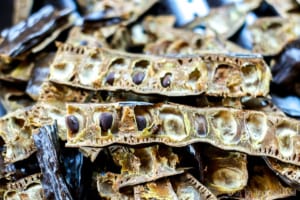
- Take each pod and cut down the length of the pod to open it, reaching the center where the seeds are.
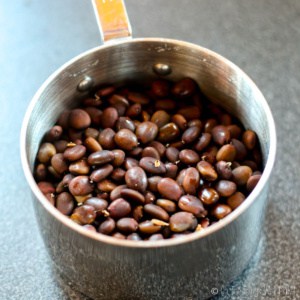
- Remove the seeds. You can either discard them or save them for crafts.
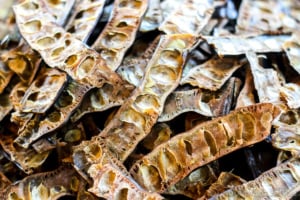
- Place the clean pods on a baking sheet, and when you have finished cleaning out all of the pods, dry them on low heat for several hours in your oven. If you have a dehydrater, use that instead.
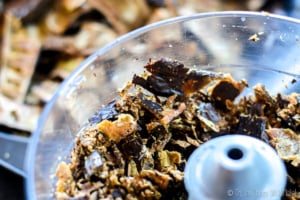
- Once completely dry, grind the pods into a flour. I used my food processor first, and then got it into a finer powder with my coffee grinder.
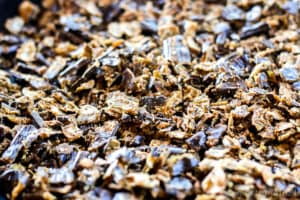
Once I was finished making my flour, I sifted through it and ground the bigger pieces some more, repeating until I had a relatively fine powder.
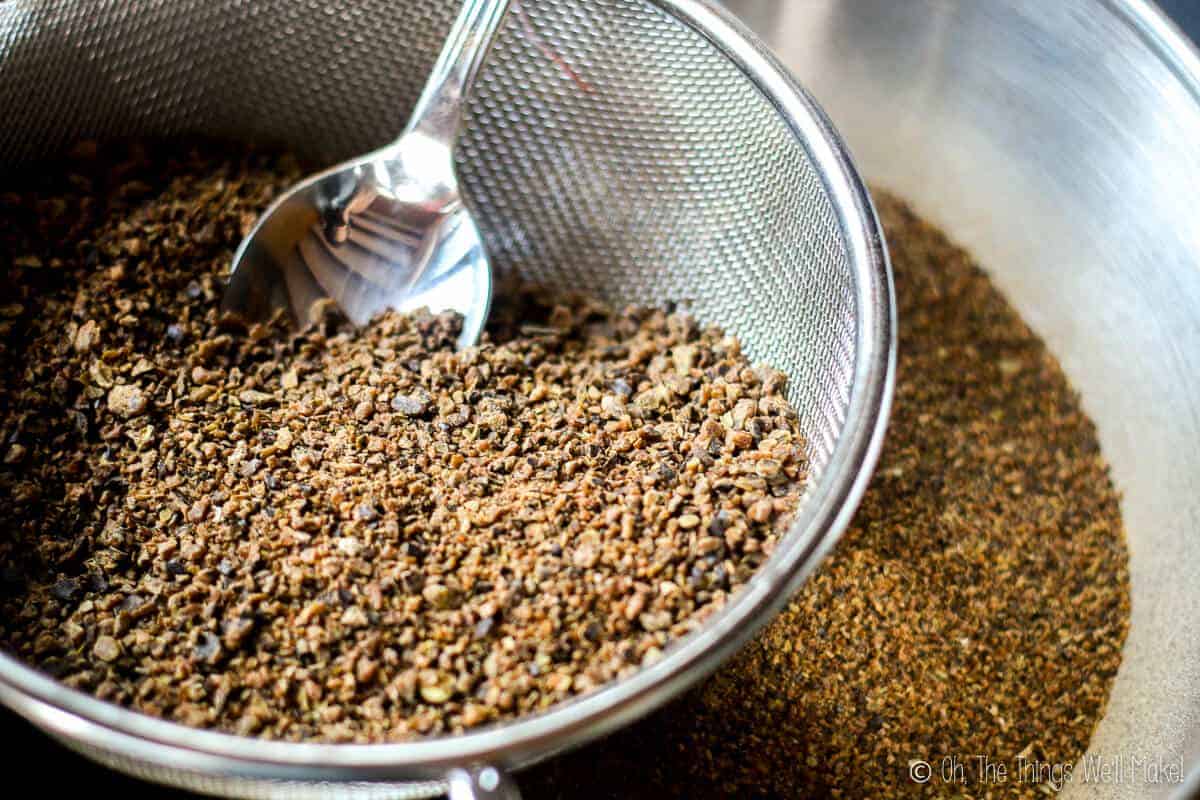
I hope you enjoyed this and found it interesting even if you don’t have carob trees growing in your yard!
Now that I have my flour, I guess I better come up with some recipes in which I can use it.
Stay tuned…
 Español
Español
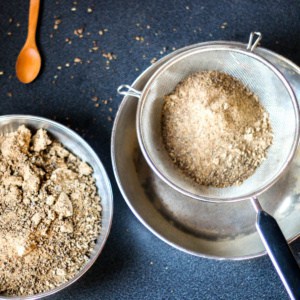
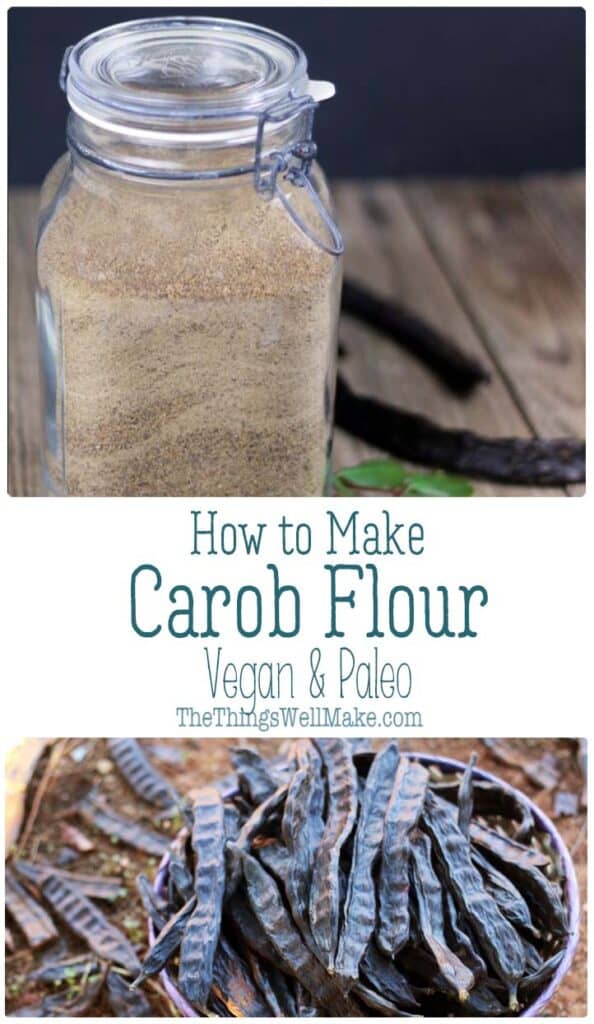
 Easy Strawberry Melon Gazpacho Soup
Easy Strawberry Melon Gazpacho Soup
naranjita
Hola! I’m from the Valencia region as well. Carob trees are very common around here, my mom used to eat the carob pods from the trees when she was young too, like Anastasia said. Recently in some eco/organic food stores I discovered a carob and hazelnut or sometimes carob and cocoa spread, similar to Nutella but darker and less sweet, and I love it! Give it a try if you like the taste of less sweet, dark chocolate. They are usually made with carob flour, so maybe you can find a recipe to do it at home with the carobs you have.
Tracy Ariza, DDS
We made a syrup one year too with just water and the carob pods. It took a long time to reduce down, but we ended up with a sweet, dark syrup without adding any extra sugar.
ci
hi.
the powder type sold in the market looks consistent colour, unlike yours shown in picture. do you think it has been modified? would you suggest to buy pods only? what is the shelf-life and storage long term?
thanks for your help.
Tracy Ariza, DDS
Hello Ci,
I think the difference in colors is because I am not able to grind mine as finely as they grind theirs. So, there are some larger particles and finer ones, and they reflect the light differently. That makes it so that they appear to have different colors.
I think if I were able to grind mine more finely, it would look more like the store-bought.
They may also process it somehow like boiling out some of the sticky sugar-like sap from the pods. I’m not sure, though.
Maria Helena B. Biazus
I just found a great recipe for carob flour. Can send you later.
Annie Whitmore
Hi there
Is carob flour the only thing you can make with the carob pods? I recently bought cut carob pods from an online seller thinking I would be able to make e.g. carob bars but can’t seem to find any recipes. The place I bought them from can’t even advise – just told me to do a google search! Is there any other thing that can be done with the cut carob pods I have? UK-friendly recipes would be welcome. I get confused trying to convert cups etc Ideas would be welcomed!
Tracy Ariza, DDS
Hi Annie,
We actually made a syrup one year. I meant to post it on the blog, but never got around to it. It took a long time to reduce the pods down to a syrup. I think we boiled them, removed the pods, and then cooked the liquid down until a thick syrup remained. We used a lot of pods and only got a small amount of syrup in the end, but it was quite good. It was naturally sweet.
You could probably add sugar to get a thicker syrup without reducing fully too. We were just curious what would happen if we only used carob, though.
The syrup is really good for sweetening/adding flavor to just about anything. 😉
Elise Slotte
Hi!
I live in Algarve and sell most of the Carobs from my garden but some of it, I will use for floar. What do I use the seeds for?
Thank you!
Tracy Ariza, DDS
I’ve made bracelets with them. 🙂
I’m not really sure otherwise. 😉
Anastasia
In Greece they were used for high nutrition during the Second World War. Many people have survived on carob. It was my grand mother’s chocolate.
Now they are in fashion again and used in recipes for cupcakes, mousses and even bread.
The taste is something between coffee and cocoa. I love it!
Esin Güngör
Hi, i tried and it was great!
I am live in Turkey and in summers we collect too much carobs.
I soak the carobs over night.than extract the seeds. Stay them Just 90 minute in the oven, it was enough. Let the oven cover open a little during 90 minute. I didn’t use food processor, Just use coffee grinder.
That was great! Thank you so much for this recipe.
Tracy Ariza
Hi Esin,
I’m glad it worked out for you!
Yes, we have way too many too. One year we made a lovely syrup with it. I did take pictures of the process. I guess I should put it up on the blog. It was quite a bit fo work, but was very tasty.
Isilda
What temperature do you set your oven at? Thank you in advance.
Marie
Hi! Great artikel! I live in Barcelona and in the park near me its so many! If i wash them and the put in oven before grinding. Can I use them u think?
Tracy Ariza
Hi Marie,
Most likely, yes.
I’m not sure about the toxicity of anything they may use to spray the trees, but I sort of doubt they would use anything on those trees. One of the great things about carob trees is that they are very low maintenance. They are drought and pest resistant.
Make sure they are fully dry before grinding or you may end up with mold after all your work. Have fun!
Hussein Bitar
Collect pods that look healthy and shiny off the tree, do not collect the ones that have fallen on the ground. Enjoy ?
Kris @ Attainable Sustainable
Do you know the botanical name of the tree? I’m thinking this would probably grow here. It LOOKS a bit like the kiawe that grows here.
Tracy Ariza
Our tree is ceratonia siliqua, which seems to be a different tree.
You’ve piqued my interest, though. I was just going to bed, but I’m going to look up yours in the morning, as I saw it referred to as the “American carob” in my preliminary search. I’m curious to see if it has pods with which you can get a similar product.
I have seen American blogs talking about having carob trees. Now I’m curious which trees they have!
Tracy Ariza
I haven’t been able to find much information about your tree. It does seem to be used similarly, eaten by some humans and used for food for livestock. The more common name for the pods for the kiawe, aka. Prosopis pallida, is the “mesquite pod.”
I found a study cited in a few places, which appears to have compared the pods, but I can’t access it to know more about it.
http://onlinelibrary.wiley.com/doi/10.1002/jsfa.2740650307/abstract
It sounds like it could be useful for something. I’m guessing if anybody could find a good use for it, you could. 😉